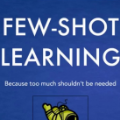Few-shot learning (FSL), purposing to resolve the problem of data-scarce, has attracted considerable attention in recent years. A popular FSL framework contains two phases: (i) the pre-train phase employs the base data to train a CNN-based feature extractor. (ii) the meta-test phase applies the frozen feature extractor to novel data (novel data has different categories from base data) and designs a classifier for recognition. To correct few-shot data distribution, researchers propose Semi-Supervised Few-Shot Learning (SSFSL) by introducing unlabeled data. Although SSFSL has been proved to achieve outstanding performances in the FSL community, there still exists a fundamental problem: the pre-trained feature extractor can not adapt to the novel data flawlessly due to the cross-category setting. Usually, large amounts of noises are introduced to the novel feature. We dub it as Feature-Extractor-Maladaptive (FEM) problem. To tackle FEM, we make two efforts in this paper. First, we propose a novel label prediction method, Isolated Graph Learning (IGL). IGL introduces the Laplacian operator to encode the raw data to graph space, which helps reduce the dependence on features when classifying, and then project graph representation to label space for prediction. The key point is that: IGL can weaken the negative influence of noise from the feature representation perspective, and is also flexible to independently complete training and testing procedures, which is suitable for SSFSL. Second, we propose Graph Co-Training (GCT) to tackle this challenge from a multi-modal fusion perspective by extending the proposed IGL to the co-training framework. GCT is a semi-supervised method that exploits the unlabeled samples with two modal features to crossly strengthen the IGL classifier.
翻译:暂无翻译



